Thinking to the future: Galerie Perrotin pays homage to Pierre Paulin
In the pages of a recent monograph on Pierre Paulin, the French designer admitted, ‘I designed a number of objects that were too complex and met no response whatsoever from the public – whether it was too early or they scratched where it didn’t itch. I do not really know.’ A new exhibition at Galerie Perrotin, which anticipates a comprehensive retrospective at the Centre Pompidou in May, promises to elicit the opposite reaction. This owes in part to a dynamic arrangement of Paulin pieces, surrounded by works from other contemporary artists including Xavier Veilhan, KAWS, Elmgreen & Dragset and Jesús Rafael Soto.
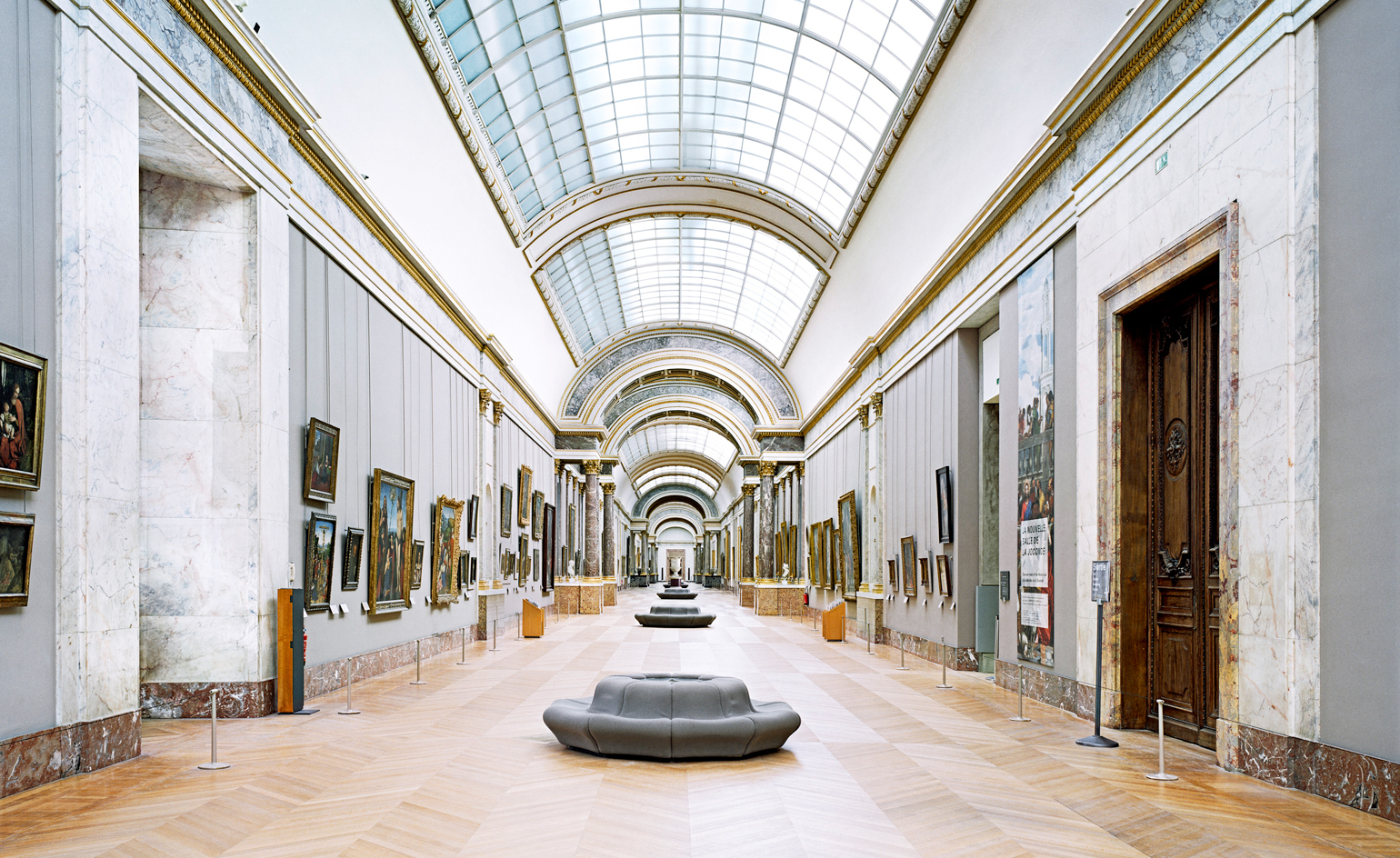
In the pages of a recent monograph on Pierre Paulin, the French designer admitted, ‘I designed a number of objects that were too complex and met no response whatsoever from the public – whether it was too early or they scratched where it didn’t itch. I do not really know.’
A new exhibition at Galerie Perrotin, which anticipates a comprehensive retrospective at the Centre Pompidou in May, promises to elicit the opposite reaction. This owes in part to a dynamic arrangement of Paulin pieces, surrounded by works from other contemporary artists including Xavier Veilhan, KAWS, Elmgreen & Dragset and Jesús Rafael Soto. But for longtime Paulin connoisseurs, the main attraction will be his Déclive, an S-curved chaise longue that had only existed in prototype until now.
Hours before the opening, the designer’s family – his widow Maïa Wodzislawska Paulin, son Benjamin and his wife Alice Lemoine – guided Wallpaper* through the four principal spaces. They pointed out how an old black-and-white photo of the Déclive from the family apartment featured Pierre’s toes in the immediate foreground; and they singled out the maquettes detailing Paulin’s proposal for the Palais Royal. This would be won by Daniel Buren, but the designs were not in vain; Paulin repurposed the geometric patterning for the carpets that grounded his Jardin à la française within Auguste Perret’s Palais d'Iena in 1987.
That same mise-en-scène has been recreated in the gallery; here, however, it is surrounded by the hyperrealist paintings by Mike Bouchet (the processed cheese triangles melting from a hamburger oddly echo Paulin’s Tapis Siège) and punctuated with a Veilhan mobile.
In some cases, the homage to Paulin is deliberate and direct: a readymade by Bertrand Lavier in which he has mounted a violet Tongue chair atop a filing cabinet; or Candida Höfer’s deep perspective photograph of the Louvre’s Grand Galerie from 2005, where Paulin’s circular banquettes serve as de facto distance markers.
For the family, which has established 'Paulin Paulin Paulin' as a means of revisiting the first edition of the pieces in very limited editions, the show breathes new life into the repertoire while emphasising the collectible aspect of his rarer works. ‘We wanted to give a chance for these pieces to exist,’ says Benjamin, adding that his father championed limited editions 30 years ago, when designed furniture still favoured industrial production. ‘I went with the collection to galleries in the States and they said it would never work,’ recalls Maïa.
In a gallery setting, the size of both the Déclive and the Ensemble Dune, which debuted last year at the Louis Vuitton-supported solo exhibition in Miami offers some indication of Paulin’s vision of seating as a larger statement. The former, a technical feat of craft and engineering, emerged from his idea to have floorboards resemble a magic carpet. As a child, Benjamin treated it as his personal indoor playground; a privilege not afforded to visitors of the show. But the notion of seeing people interact with the pieces accounts for the provocative placement of John De Andrea’s bronze nudes throughout the show—reclining forlorn on a rug or posing confidently within the 'Dune'. At first, Maïa believed one of them to be real, and conceded that the furniture is most alive when experienced first-hand. ‘It’s not a work of art in the sense that you just walk around it,’ she says. ‘In a way, it’s a shame when you can’t enjoy the comfort and the pleasure of the form; a piece like the 'Dune' is here to receive people – it’s welcoming and friendly.’
Incidentally, she revealed that as much as her husband held artists such as César, Soulages, Miró and Bacon in high regard, he did not possess the mentality of a collector – even when it came to his own pieces. ‘He was always thinking to the future,’ says Maïa. ‘Sometimes people would ask him, “Which has been your favorite?” And he would always answer, “The one to come”.’
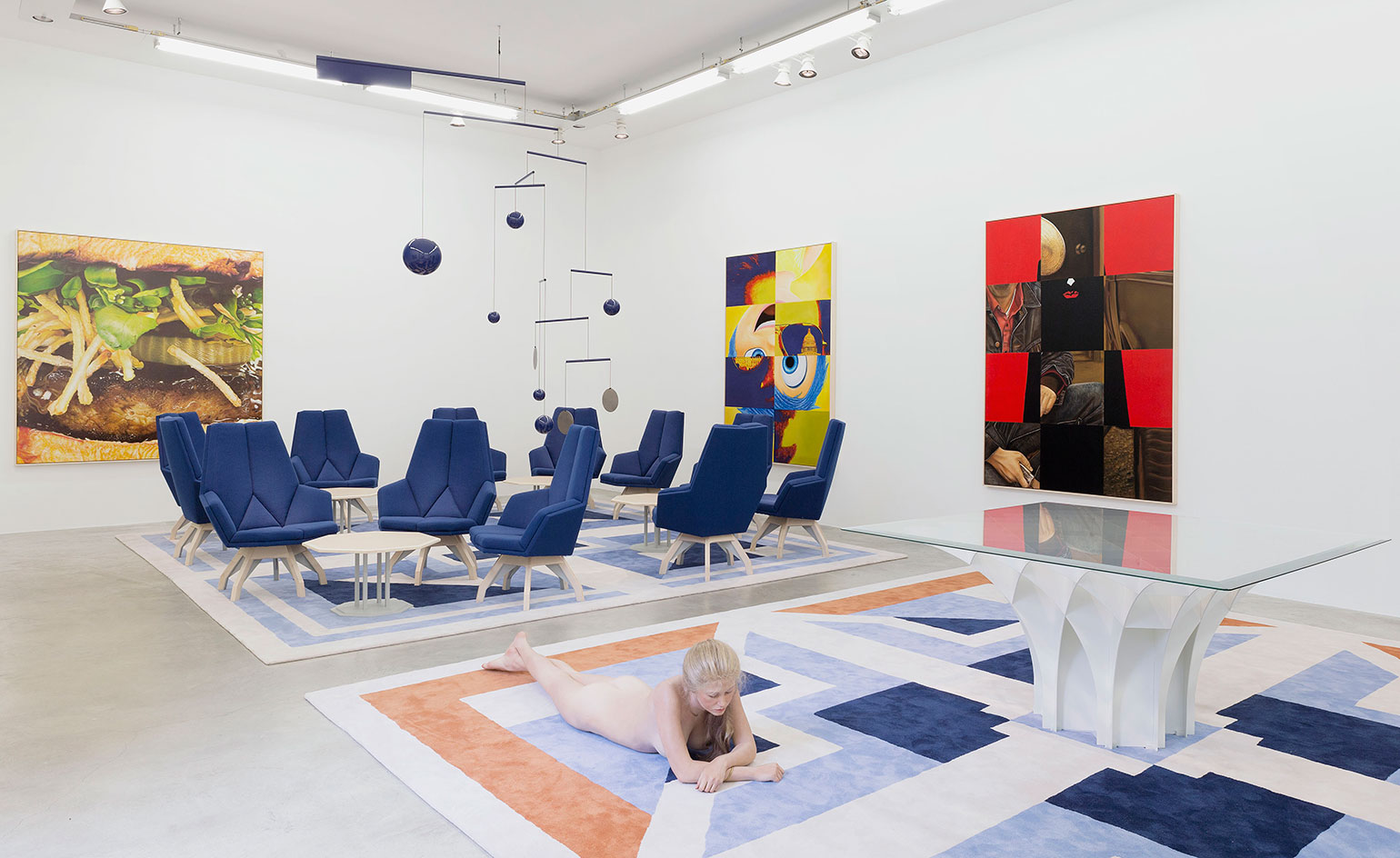
This owes in part to a dynamic arrangement of Paulin pieces, surrounded by works from other contemporary artists including Xavier Veilhan, KAWS, Elmgreen & Dragset and Jesús Rafael Soto. From left: Mike Bouchet, Pierre Paulin Xavier Veilhan and John De Andrea.
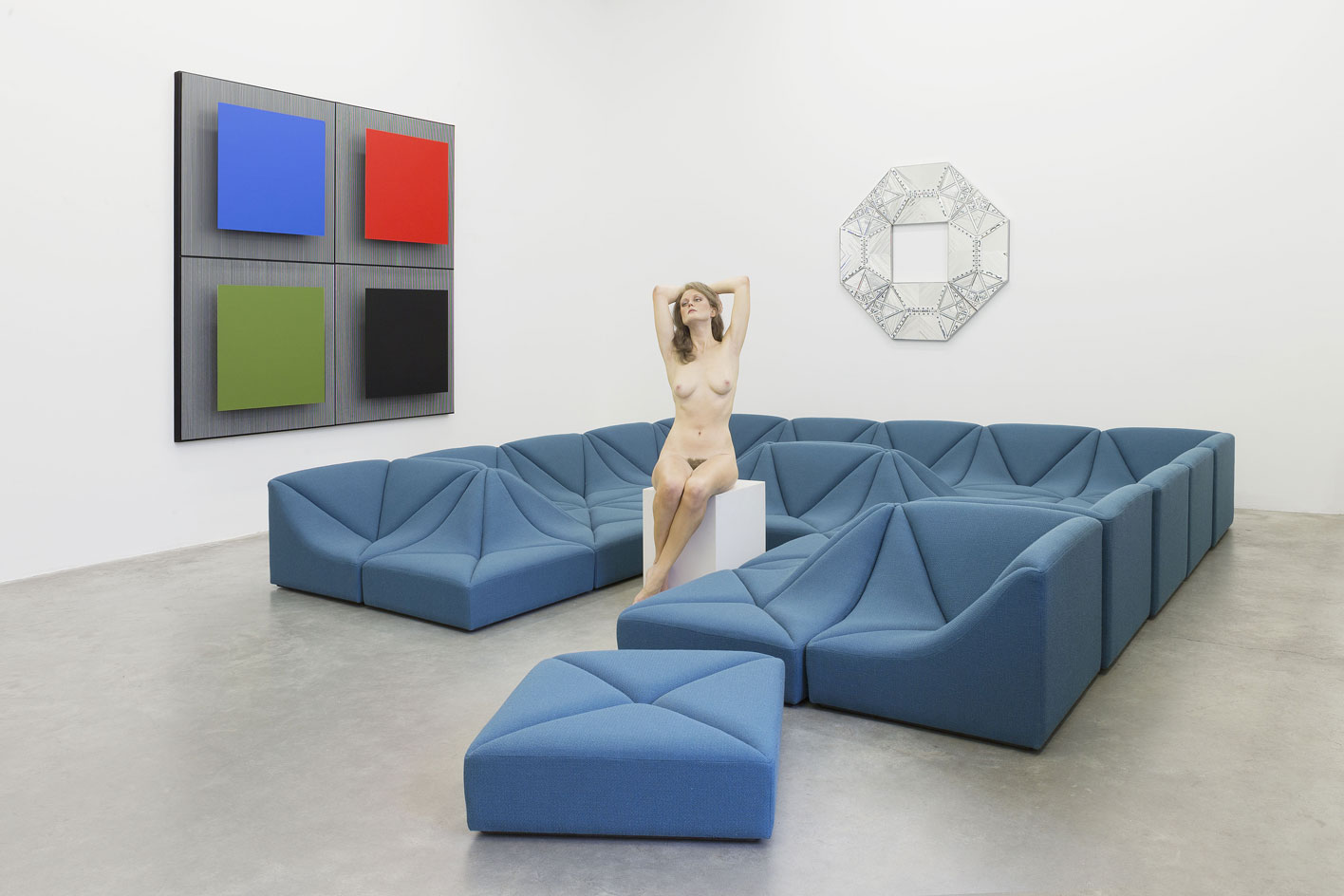
De Andrea's bronze nudes are provocatively placed throughout the show. Pictured left to right: Jesús-Rafael Soto, Pierre Paulin, John De Andrea and Monir Shahroudy Farmanfarmaian.
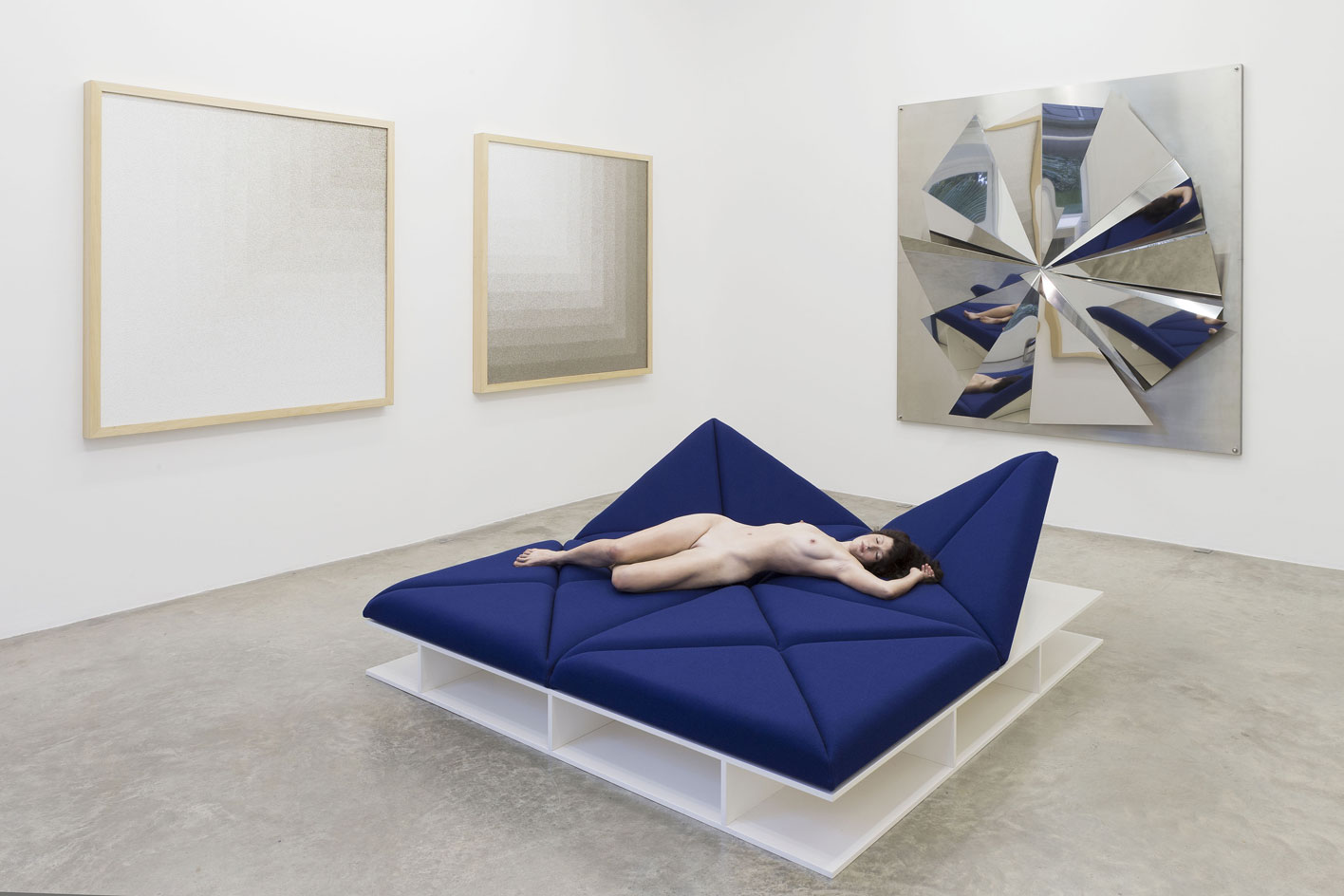
'Paulin, Paulin, Paulin' anticipates a comprehensive retrospective at the Centre Pompidou in March. Pictured left to right: Tara Donovan, Pierre Paulin, John De Andrea and Heinz Mack.
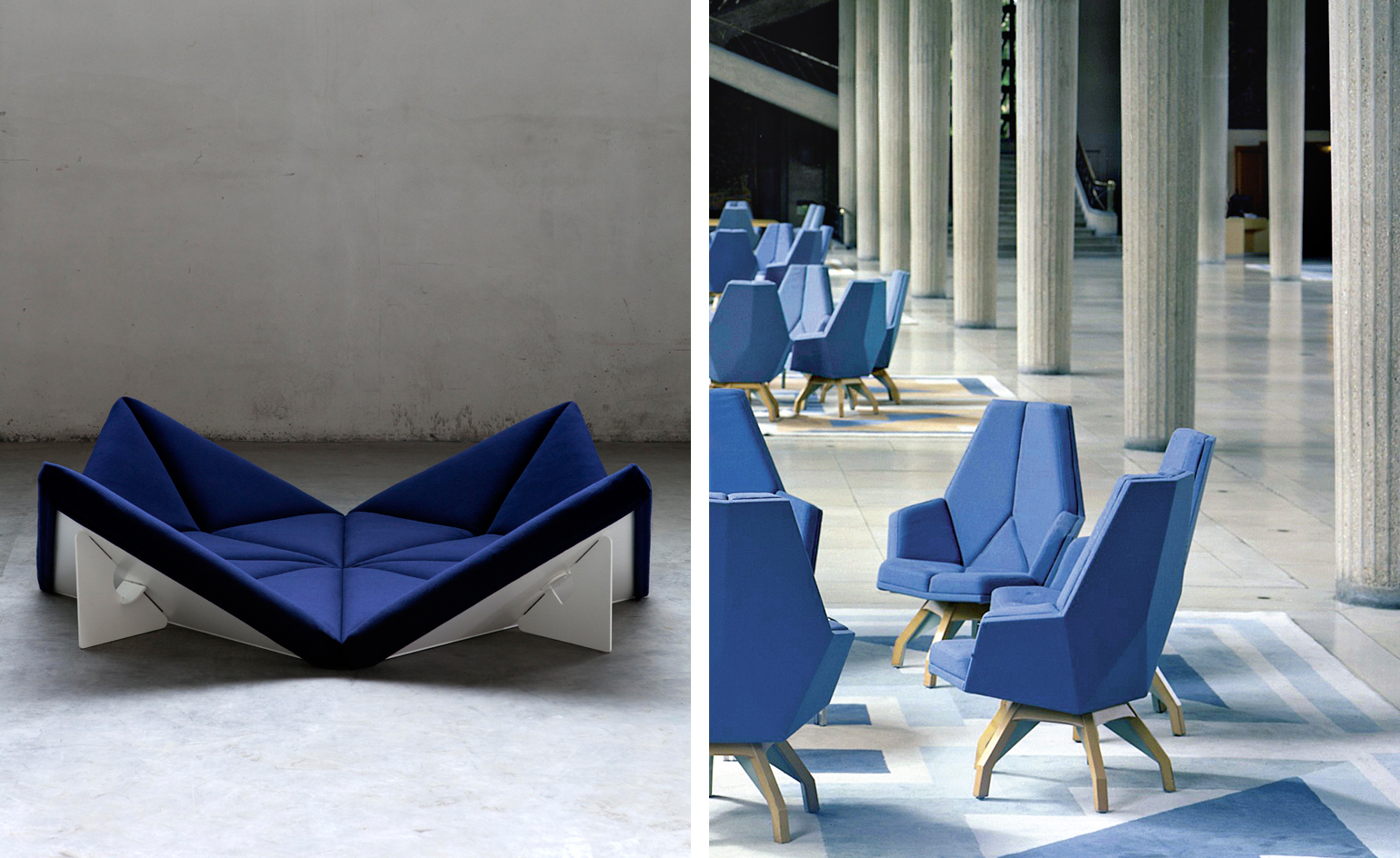
Paulin’s Tapis Siège is oddly echoed by Mike Bouchet's hyperrealist processed cheese triangles melting from a hamburger. Pictured left: Tapis Siège, by Pierre Paulin, 1970. Right: Fauteuil Iéna and Jardin à la française, by Pierre Paulin, 1987
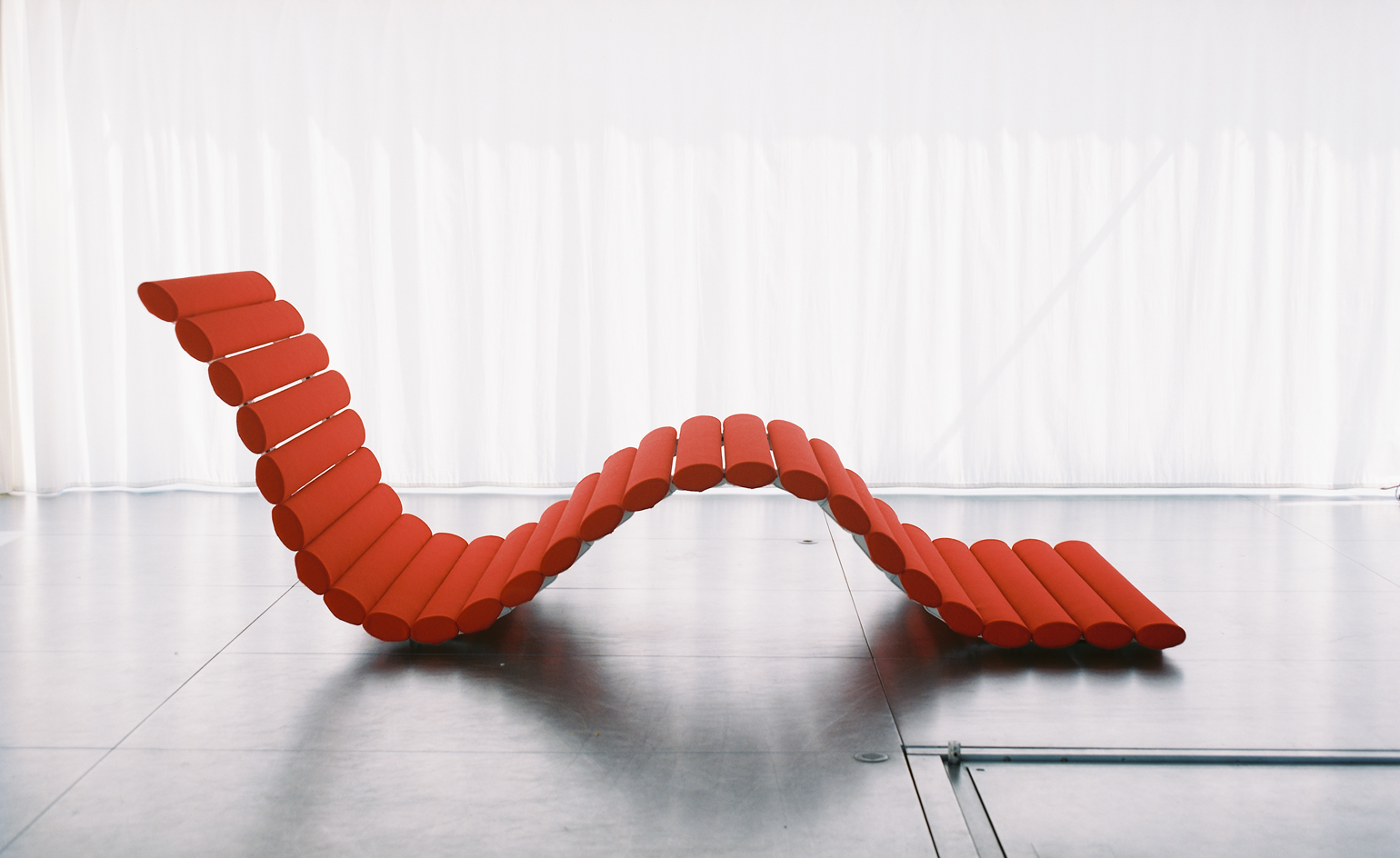
For longtime Paulin connoisseurs, the main attraction will be his Déclive, an S-curved chaise longue that had only existed in prototype until now. Pictured: Déclive, by Pierre Paulin, 1966.
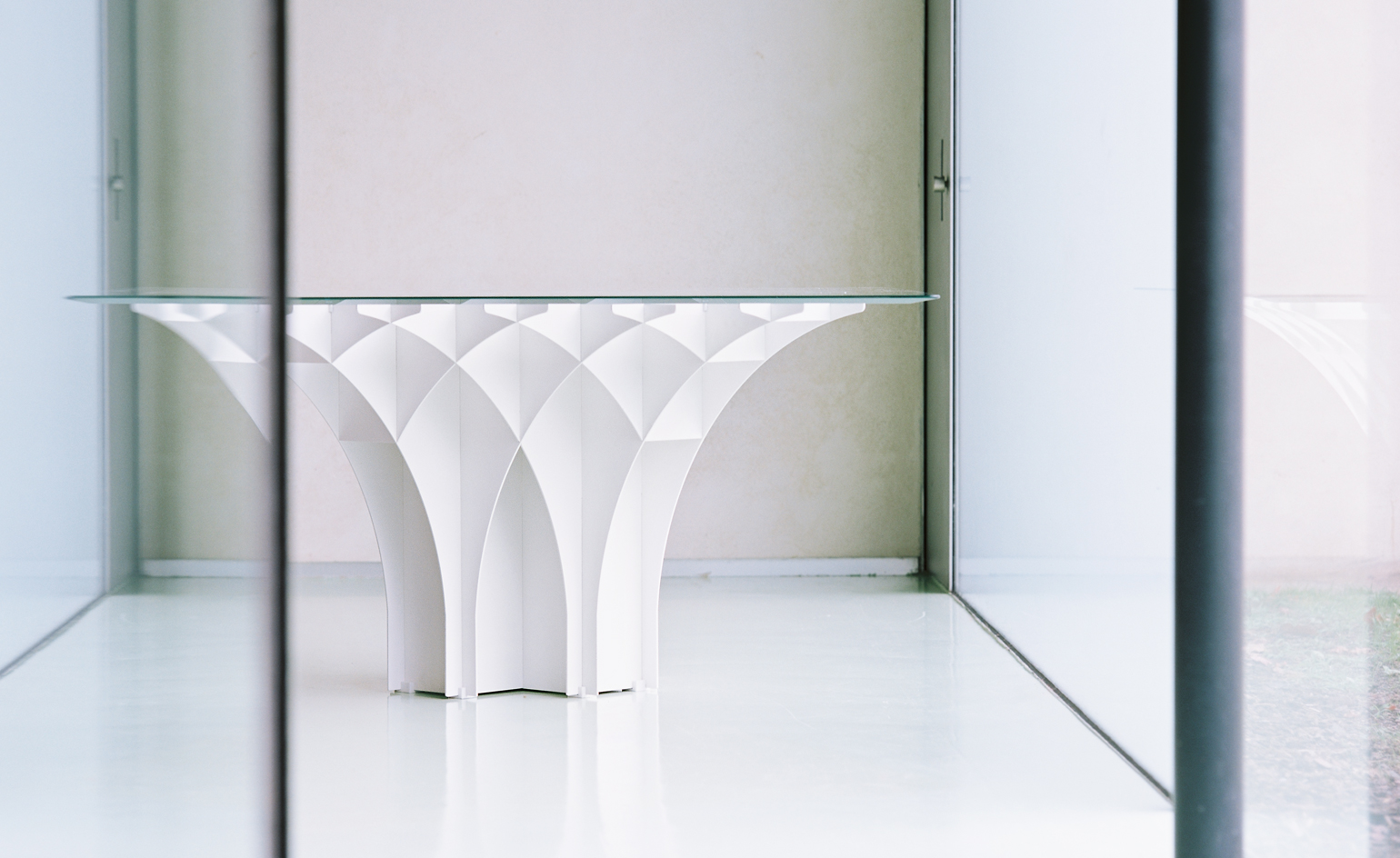
Table Cathédrale, by Pierre Paulin, 1981.
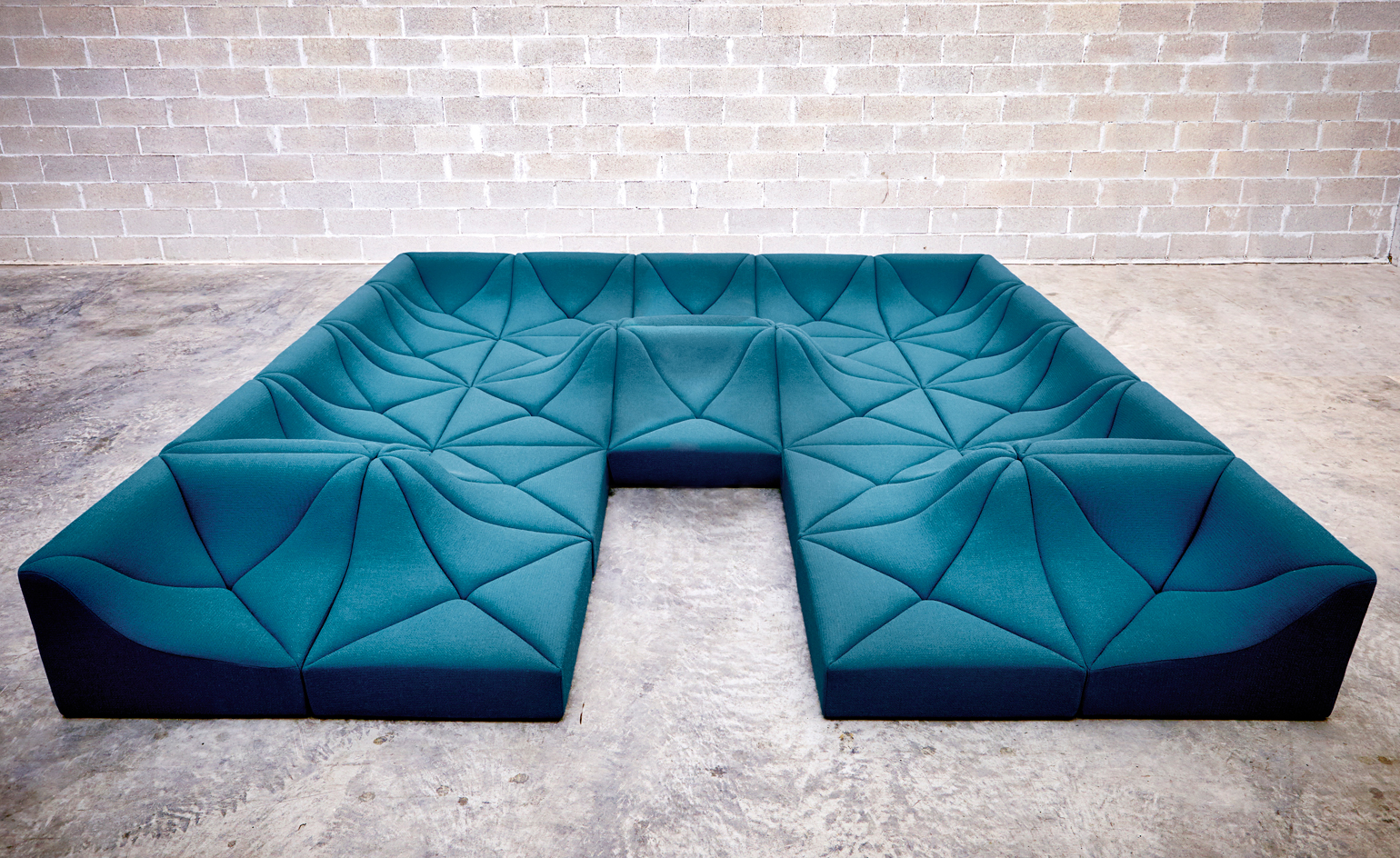
Ensemble Dune debuted last year at a Louis Vuitton-supported solo exhibition in Miami, offering some indication of Paulin’s vision of seating as a larger statement. Pictured: Ensemble Dune, by Pierre Paulin, 1970.
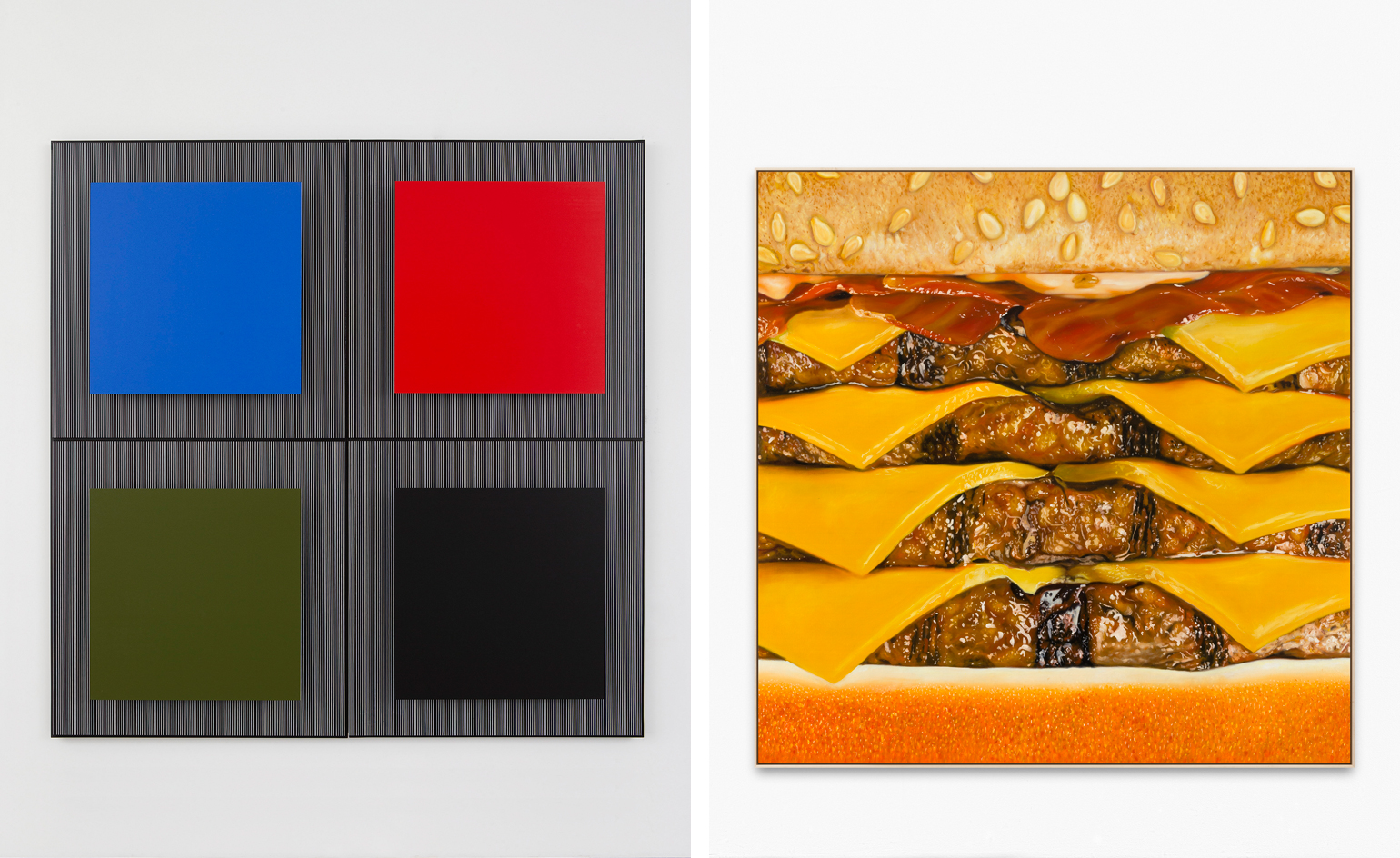
Left: Cobalto a la izquierda, by Jesús Rafael Soto, 1993. Right: Square Ruple, by Mike Bouchet, 2015.
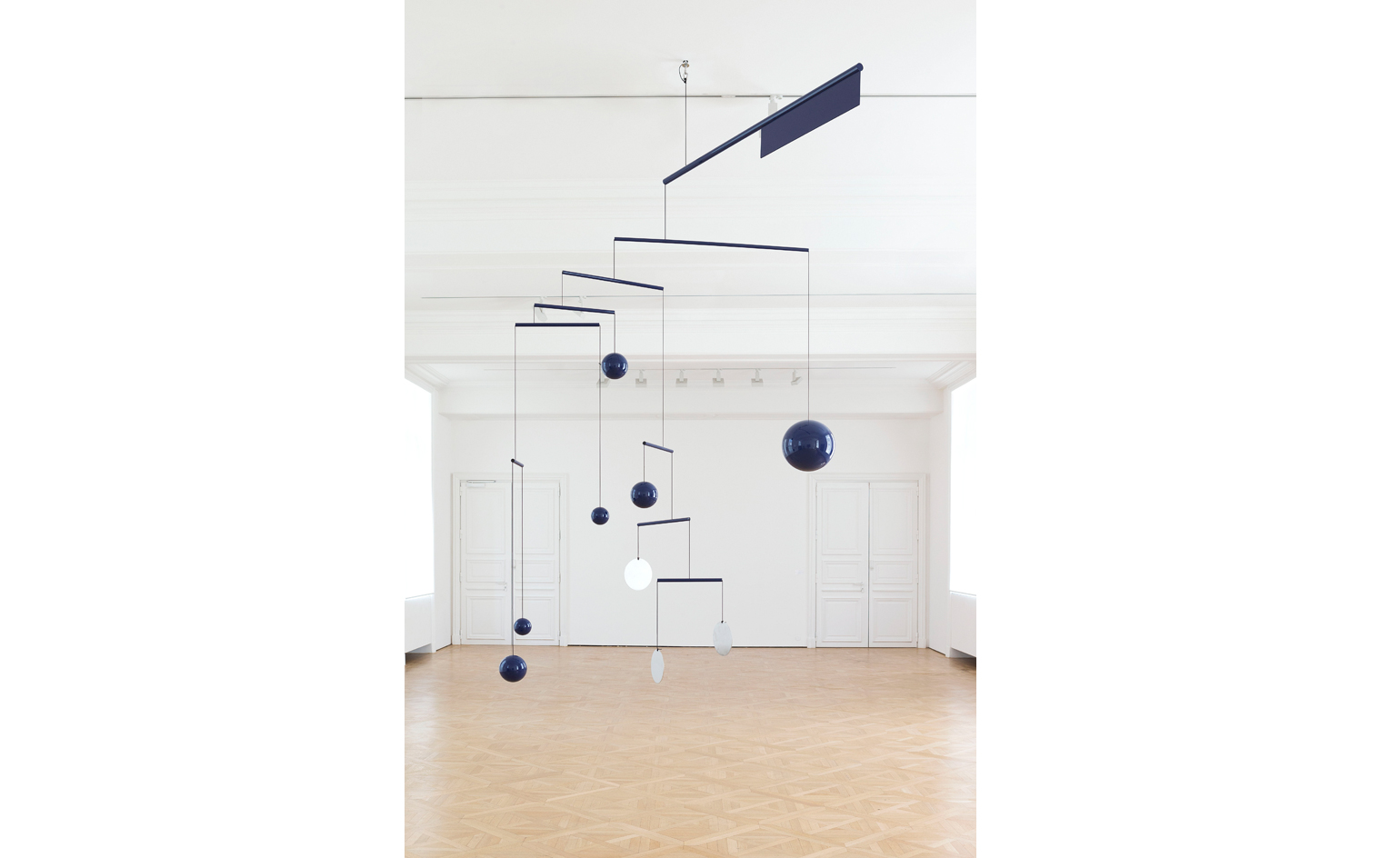
The mise-en-scène of Paulin's Jardin à la française within Auguste Perret’s Palais d’Iena has been recreated in the gallery; here, however, it is punctuated with a Veilhan mobile. Pictured: Mobile n°21, by Xavier Veilhan, 2015.
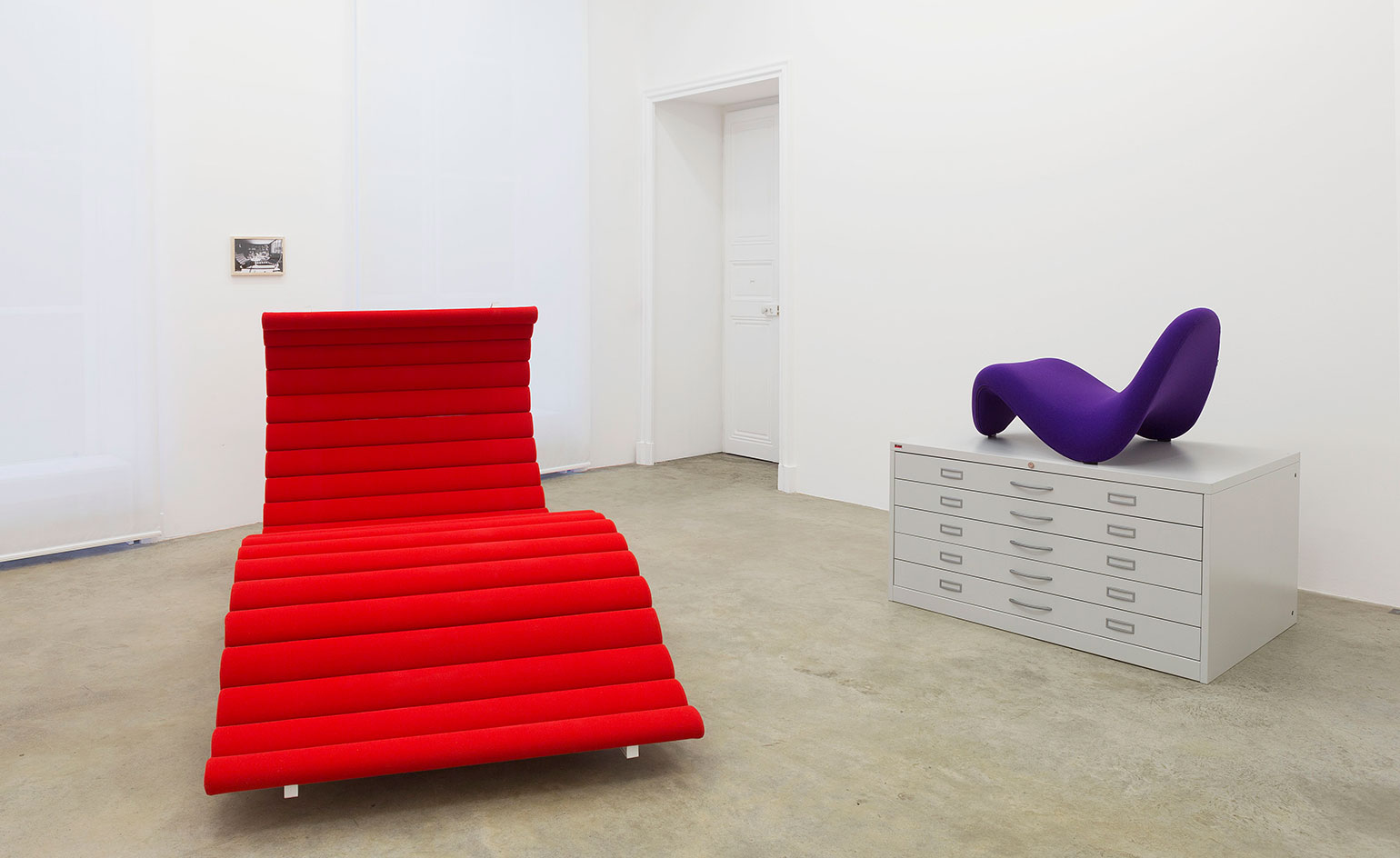
From left to right: Pierre Paulin 'La Déclive', 1966 and Bertrand Lavier 'Paulin/Kind', 1992-2015.
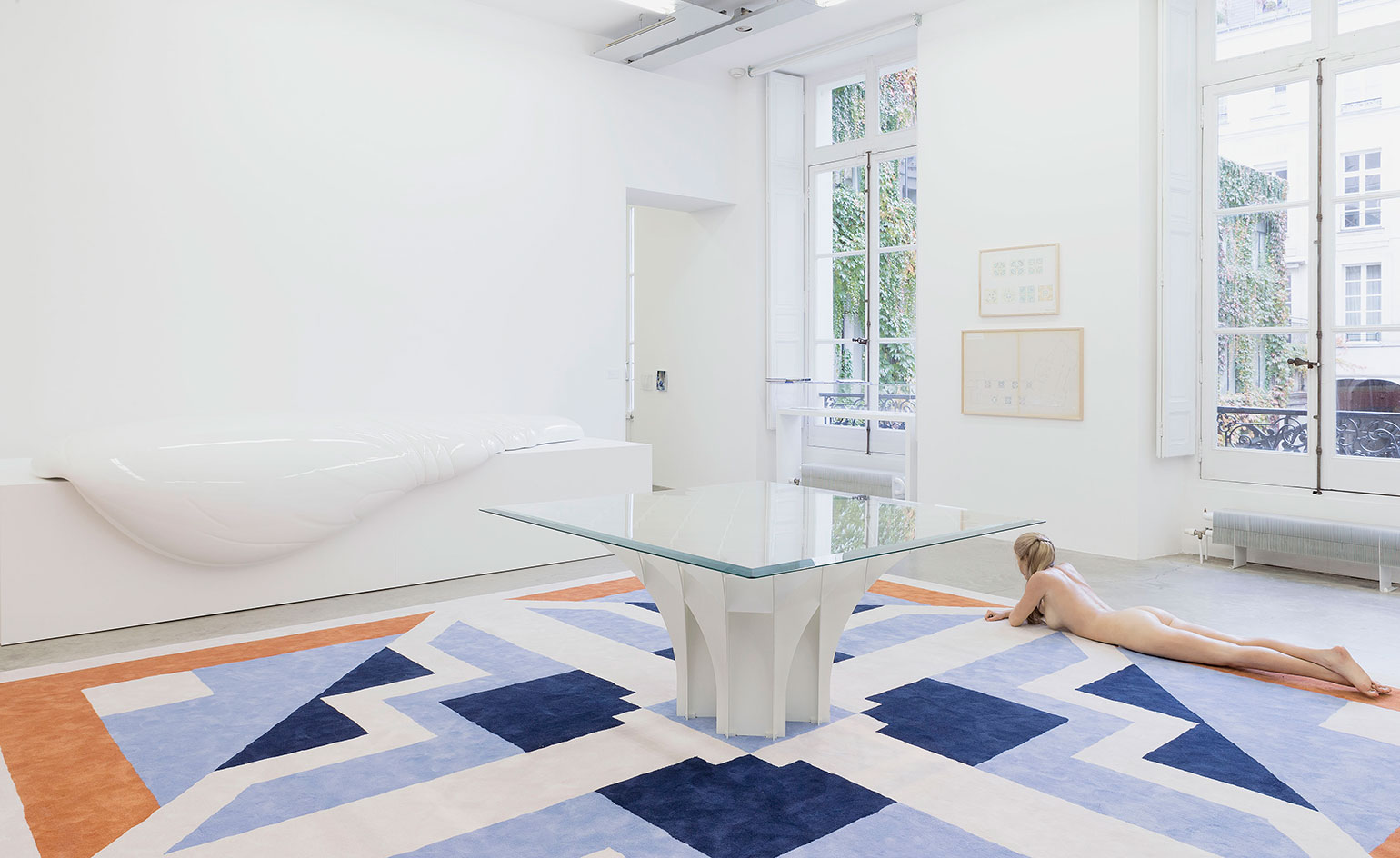
From left: César, Pierre Paulin and John De Andrea.
INFORMATION
'Paulin, Paulin, Paulin' is on view until 19 December
ADDRESS
Galerie Perrotin Paris
76 rue de Turenne
75003 Paris
Wallpaper* Newsletter
Receive our daily digest of inspiration, escapism and design stories from around the world direct to your inbox.
-
 All-In is the Paris-based label making full-force fashion for main character dressing
All-In is the Paris-based label making full-force fashion for main character dressingPart of our monthly Uprising series, Wallpaper* meets Benjamin Barron and Bror August Vestbø of All-In, the LVMH Prize-nominated label which bases its collections on a riotous cast of characters – real and imagined
By Orla Brennan
-
 Maserati joins forces with Giorgetti for a turbo-charged relationship
Maserati joins forces with Giorgetti for a turbo-charged relationshipAnnouncing their marriage during Milan Design Week, the brands unveiled a collection, a car and a long term commitment
By Hugo Macdonald
-
 Through an innovative new training program, Poltrona Frau aims to safeguard Italian craft
Through an innovative new training program, Poltrona Frau aims to safeguard Italian craftThe heritage furniture manufacturer is training a new generation of leather artisans
By Cristina Kiran Piotti